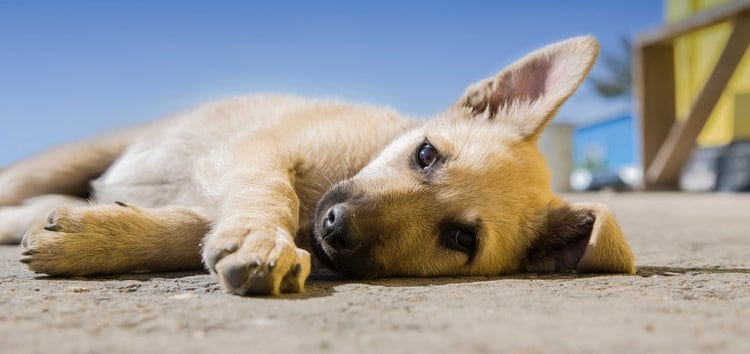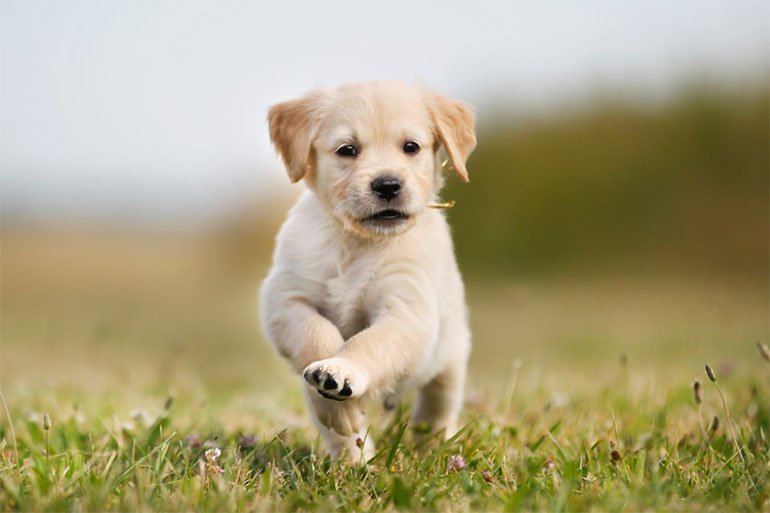Mutts or mongrels are mixed or random-bred dogs.
They result from breeding different purebreds or other mixed-breed dogs together.
Their ancestry is unknown, but that makes them no less valuable as family dogs. In fact, mutts make exceptional companions and are becoming a popular pet choice all over the world.
Mutts have a distinct advantage over purebreds.
Most purebred dogs have developed from a small genetic base, which produces consistent size, shape, and personality, but also concentrates dangerous genes that increase medical risks.
Mutts are just as prone to infection and injury as purebreds but have a far lower risk of inherited diseases.
The biggest issue when it comes to Mutts is the uncertainty. Simply stated, mutts may inherit all the best or all the worst traits of their parents. It is difficult and sometimes even impossible to predict how a mutt will behave or what they will look like.Not knowing how big is your mutt puppy going to grow can be a problem, especially if you live in an apartment or house without a yard.
Additionally, guessing the adult size of your mutt puppy can be tricky.
Experienced veterinarians and shelter workers are pretty good at predicting the adult size. However, making an accurate estimation and determining the true adult size of a mutt puppy is usually hard and complicated.
Even in purebred dogs, there are no guarantees about how tall your puppy will be as an adult or how much they will weight.
However, there are some general guidelines and expectations. On the flip side, in mutts the element of surprise is much bigger.
Luckily, no matter how hard it can be, there are some telltale signs that can help you make a rough prediction of how big your mutt puppy will get.
How to Estimate How Big a Mutt Puppy Will Grow
Breed, origin, and size of both parents – The easiest and most accurate way of predicting your puppy’s adult size is to look at the parents.
The parents’ height and weight are very revealing about the puppies’ future stature and physical appearances. Two Terrier sized dogs cannot spawn big offspring, while two Labrador sized dogs cannot spawn small offspring.
Sometimes the sex of the puppy can be considered a good indicator – Usually male puppies take after their daddy in size and tend to be bigger, while female puppies take after their mommy and tend to be smaller.
Assessing the future size potential is rather difficult when one of the parents is big and the other one is small. In such cases, the bitch’s size is more indicative than the sire’s.
Unfortunately meeting the parents is not possible if adopting from a shelter or saving a stray puppy from the streets.
However, you can always compare which breeds resemble your puppy most and research their traits, size ranges, and physical appearances. If adopting through a private sale, it is advisable to at least meet the mother.
It is not a foolproof method, but usually big dogs start out with relatively big paws.
The puppy’s paws tend to grow faster than other parts of the body and eventually one day the puppy will grow into its oversized paws. With time, the puppy’s paws will become proportional to the rest of the body.
In a nutshell, big paws equal bog dog. Bigger paws portend greater height and potentially greater weight. Humans tend to share this feature as well – big feet usually indicate greater height and weight.
As previously mentioned, although the paws’ size is not a foolproof method, it is a widely used estimation tool for making solid predictions.
It is simply impossible to have a 100-pound dog elegantly walking on ballerina-sized paws. It is also impossible to have a teacup-sized dog parading on chubby paws.
Loose skin – The presence of loose, saggy skin is a good indicator that your puppy will be a larger mutt when fully gown. Just like the paws, the puppy must fill out all the extra skin.
Simply put, the looser the puppy’s skin is, the more room it has to grow into and the larger it is likely to become. So, if your adorable mutt puppy appears wrinkled and like in need of ironing, be prepared, you might need to deal with a giant once it grows up.

You can predict your mutt puppy’s size by using some math methods and formulas. The most commonly used methods are:
Growth curve – Plotting the puppy’s growth curve is an undocumented but relatively valid method of assessing your mutt’s size.
There are two growth phases. The first phase is the rapid growth phase and occurs from birth to 6 months of age. The second phase is the slow growth phase and occurs at 8-14 months of age.
Both height at withers and weight can be plotted on a chart and assessed at intervals. As the name itself suggests, the growth curve is really curved, thus reaching a ‘knee’ when the dog reaches about 65% of its eventual size. The curve plateaus after the puppy achieves 95% of its size.
The double-it formula – according to experts you can estimate your mutt puppy’s size by using the double-it formula. All you need to do is check your puppy’s weight at 14 weeks of age and double it to get its approximate future weight.
It should be noted that the speed of weight gain in puppies depends on the type of nutrition it receives. The formula works only if you feed your puppy the normal daily amount of a high-quality puppy food.
Height increase vs. weight gain – when the puppy reaches a certain point in its life, the growth plates of the long bones become fused, thus causing the bone length to stop increasing.
That is when the puppy’s growth in height ends and usually occurs around 8-11 months of age. On the flip side, the body weight continues to increase until reaching full adult maturity.
A good way of predicting your mutt’s size would be comparing its height increase with its weight gain. For example, you can expect your puppy to be about 25% of its adult weight at 10 weeks old, about 50% of its adult weight at 4 months old and about 75% of its adult weight at 6 months old.
Taking Care of Your Mutt
Fortantly, when it comes grooming your mutt puppy you can following much the same advice as a traditional pup. It is advised you invest in a shampoo product designed specifcally for puppies, and follow the same steps when bathing your young dog as you would any other breed.
The Difference Between Designer dogs & Mutt Puppies
The term ‘designer dogs’ refers to hybrids created by combining existing and well-established breeds to create new ones.
Despite their known origin and predictable personality traits as well as physical appearances, in the eyes of the AKC (American Kennel Club) and CKC (Canadian Kennel Club), designer dogs are considered mutts.
However there are written standards and size ranges for all existing designer dogs.
Defying description, mutts are considered a testament to nature.
Although made without any human interference, they are wonderfully designed.
Choosing a mutt dog is often compared to blind dating – you just never know what you will end up with.

